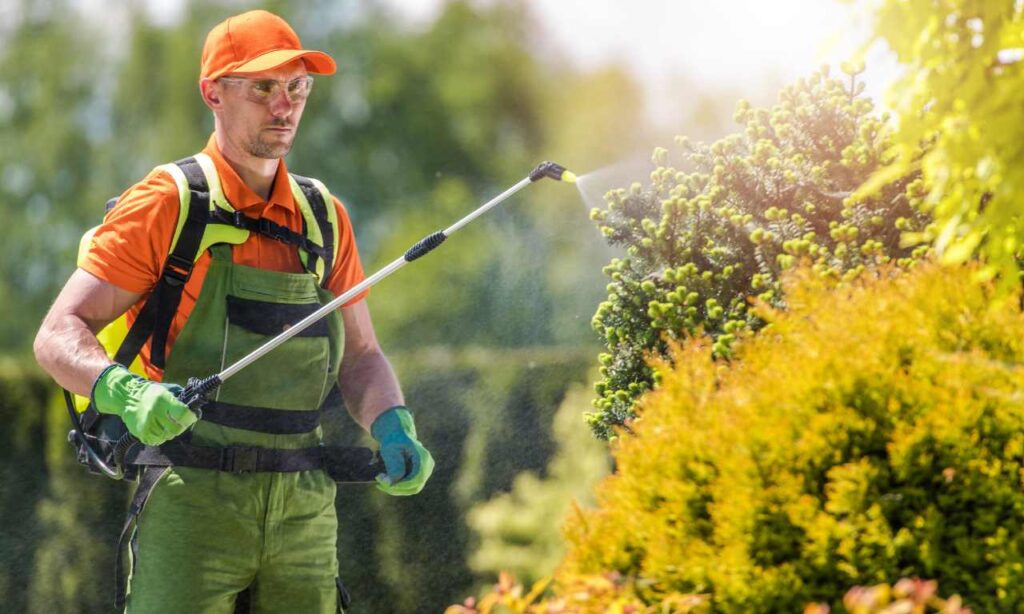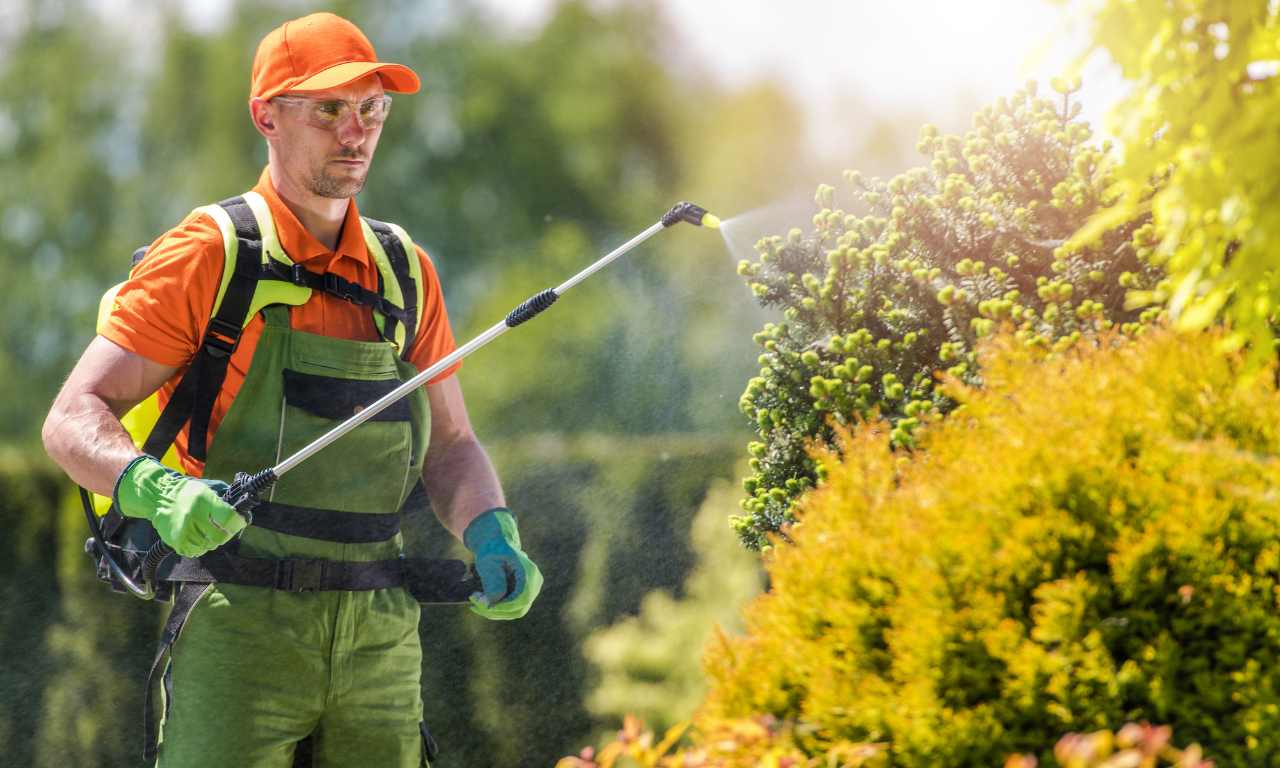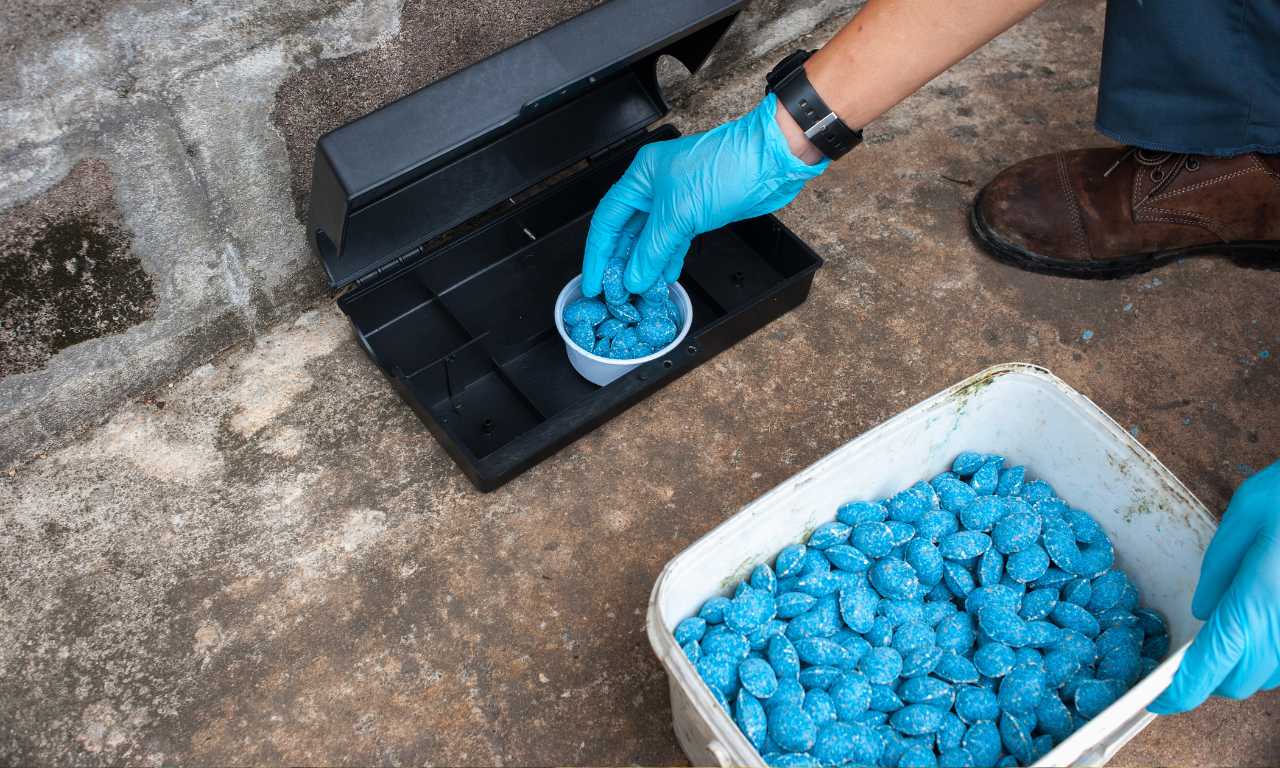
 Insecticides are chemicals that are used to control or kill insects. They are widely used in agriculture and in home and garden settings to protect crops and plants from pests and to eliminate insects that can be a nuisance or cause health problems. Insecticides come in various forms such as sprays, dusts, and baits, and can be applied in different ways depending on the type of insect and the location of the infestation.
Insecticides are chemicals that are used to control or kill insects. They are widely used in agriculture and in home and garden settings to protect crops and plants from pests and to eliminate insects that can be a nuisance or cause health problems. Insecticides come in various forms such as sprays, dusts, and baits, and can be applied in different ways depending on the type of insect and the location of the infestation.
Insecticides are chemicals that are used to control or kill insects. They can be classified into several categories such as contact insecticides, systemic insecticides, bait insecticides and biological insecticides.
It is important to note that, even though these insecticides are considered to be less toxic, they can still be harmful if used improperly or in large quantities. It’s important to always follow the label instructions and to use personal protective equipment when handling these chemicals.
Furthermore, among these categories, there are different subcategories based on their chemical composition, mode of action and target pests. For example, neonicotinoids are a subcategory of systemic insecticides, Bt is a subcategory of biological insecticides and pyrethrins and pyrethroids are subcategories of contact insecticides.
In addition, it’s worth mentioning that some insecticides are restricted-use pesticides and can only be used by certified applicators or under the direct supervision of a certified applicator. These insecticides are considered to be more toxic and have higher potential for environmental and health risks.
Contact Insecticides
Contact insecticides, as the name suggests, work by physically coming into contact with the insect and killing it through contact or by ingestion. They are typically broad-spectrum, which means they can be toxic to many different types of insects. Some examples of contact insecticides include pyrethrins and pyrethroids, which are derived from chrysanthemum flowers, and carbamates.
Pyrethrins and pyrethroids are a group of insecticides derived from Chrysanthemum flowers. They work by disrupting the nervous system of insects, causing paralysis and death. Pyrethrins are considered to be relatively low in toxicity to mammals, and are often used in home and garden products, such as bug sprays and foggers.
Pyrethroids, on the other hand, are synthetic versions of pyrethrins, and are generally more stable and longer lasting. They can be used in a similar way to pyrethrins, and are also used in agriculture and commercial settings.
Carbamates are another type of contact insecticide. They also work by disrupting the nervous system of insects, causing paralysis and death. They are considered to be less toxic than organophosphates and are often used in home and garden products. Some examples of carbamates include carbaryl and propoxur.
Contact insecticides are useful in controlling many different types of pests, such as ants, cockroaches, mosquitoes, and flies. They can be applied as sprays, dusts, or foggers, and can be used to treat both indoor and outdoor areas.
However, it’s worth mentioning that these insecticides can be harmful if used improperly or in large quantities, as well as some insects can become resistant to certain types of contact insecticides over time, making them less effective.
Furthermore, it’s important to follow the label instructions and to use personal protective equipment when handling these chemicals. Additionally, some insects can become resistant to certain types of contact insecticides over time, making them less effective. Integrated pest management strategies that combine multiple methods, such as biological control, cultural control and physical control, are often more effective in the long term.
One of the advantages of contact insecticides is that they can quickly kill the targeted pests and can provide rapid relief from infestations. They are also generally easy to use and can be applied by homeowners and professional applicators alike.
However, contact insecticides can be harmful to beneficial insects, such as bees and butterflies, and can also be toxic to birds and other animals. Therefore, it’s important to use them carefully and only when necessary.
Systemic Insecticides
Systemic insecticides are a type of insecticide that work by being absorbed by the plant and circulating throughout its tissues, including the sap. This allows the insecticide to kill insects that feed on the plant. One of the most common examples of systemic insecticides are neonicotinoids, which are chemically similar to nicotine and are often used in agriculture to protect crops from pests.
Neonicotinoids are a class of systemic insecticides that work by targeting the nervous system of insects. They are often used to protect crops from pests such as aphids, whiteflies, and thrips, as well as to control termites and other wood-boring insects.
They are particularly effective against sucking pests, which feed on plant sap. Neonicotinoids are taken up by the plant’s roots and then transported to the leaves and flowers, where they provide protection against feeding insects.
Another example of systemic insecticides is the Imidacloprid, a neonicotinoid that is widely used to protect crops such as corn, cotton, and soybeans from a variety of insect pests. It is also used to control termites and other wood-boring insects.
Imidacloprid is applied as a seed coating, granules, or a soil drench, and it is taken up by the plant’s roots and transported to the leaves and flowers, where it provides protection against feeding insects.
Systemic insecticides are useful in controlling many different types of pests, such as aphids, whiteflies, and thrips. They can be applied as seed coatings, granules, or soil drenches, and they can provide long-term protection for the treated plants.
However, it’s worth mentioning that these insecticides can be harmful to beneficial insects, such as bees and butterflies, and can also be toxic to birds and other animals. Therefore, it’s important to use them carefully and only when necessary.
Additionally, it’s worth mentioning that some insects can become resistant to certain types of systemic insecticides over time, making them less effective. Integrated pest management strategies that combine multiple methods, such as biological control, cultural control and physical control, are often more effective in the long term.
One of the advantages of systemic insecticides is that they can provide long-term protection for the treated plants, and they can be an effective way to control many different types of pests. However, they can also be harmful to beneficial insects, such as bees and butterflies, and can also be toxic to birds and other animals. Therefore, it’s important to use them carefully and only when necessary.
Bait Insecticides
 Bait insecticides are a type of insecticide that work by attracting the insect to a location where it will consume the insecticide and die. They are often used to control pests in outdoor and indoor settings and are particularly effective against crawling and foraging insects such as ants, cockroaches, and termites.
Bait insecticides are a type of insecticide that work by attracting the insect to a location where it will consume the insecticide and die. They are often used to control pests in outdoor and indoor settings and are particularly effective against crawling and foraging insects such as ants, cockroaches, and termites.
One of the most common examples of bait insecticides is boric acid. It is a naturally occurring substance that is toxic to insects when ingested. Boric acid is often used to control ants, cockroaches, and silverfish, and it can be found in many different forms such as powders, gels, and baits. The insects consume the boric acid and die as a result of the toxic effect on their digestive system.
Another example of bait insecticides is hydramethylnon, which is a slow-acting stomach poison that works by disrupting the insect’s energy metabolism. It is used to control a variety of crawling insects such as cockroaches, ants, and silverfish. The insects consume the hydramethylnon and die as a result of the toxic effect on their digestive system.
Bait insecticides are generally considered to be less toxic to humans and other mammals than many other types of insecticides, but they can still be harmful if ingested or handled improperly. They are also considered to be less harmful to beneficial insects such as bees and butterflies.
Bait insecticides can be applied in a variety of ways, such as baits, gels, or powders. They can be used to treat both indoor and outdoor areas, and are often used in areas where pests are known to congregate, such as near food sources or in humid areas. They can be particularly effective against crawling and foraging insects such as ants, cockroaches, and termites.
It’s worth mentioning that, bait insecticides can be less effective if the insects don’t find or accept the bait, or if the active ingredient of the bait is not attractive enough to them. Additionally, some insects can become resistant to certain types of bait insecticides over time, making them less effective. Integrated pest management strategies that combine multiple methods, such as biological control, cultural control and physical control, are often more effective in the long term.
One of the advantages of bait insecticides is that they can be an effective way to control many different types of pests, and they are generally considered to be less toxic to humans and other mammals than many other types of insecticides.
However, it’s important to use them responsibly, following the label instructions and being aware of the potential risks and limitations. Integrated pest management strategies that include a variety of methods such as biological control, cultural control, and physical control, will provide a more sustainable and effective solution in the long term.
Biological Insecticides
Biological insecticides are a type of insecticide that are derived from natural sources such as bacteria, fungi, and viruses and are used to control pests in an eco-friendly way. They are targeted to specific insects and do not harm beneficial insects, birds, and other animals. One of the most common examples of biological insecticides is Bacillus thuringiensis (Bt) and Spinosad.
Bacillus thuringiensis (Bt) is a naturally occurring soil-borne bacteria that produces a toxin that is toxic to certain insects when ingested. Bt is used to control a wide variety of insect pests such as the European corn borer, the cotton bollworm, and the tobacco budworm.
Bt is available in different formulations, such as a spray, a dust, or a seed treatment, and it can be used to treat both indoor and outdoor areas. Spinosad is another example of a biological insecticide. It is a naturally occurring soil-dwelling bacteria that produces a compound that is toxic to insects when ingested.
Spinosad is used to control a wide variety of insect pests such as the codling moth, the diamondback moth, and the fruit fly. Spinosad is available in different formulations, such as a spray, a dust, or a seed treatment, and it can be used to treat both indoor and outdoor areas.
Biological insecticides are considered to be eco-friendly because they are derived from natural sources, they are targeted to specific insects, and they do not harm beneficial insects, birds, and other animals. They are also considered to be less toxic to humans and other mammals than many other types of insecticides.
Biological insecticides can be applied in a variety of ways, such as sprays, dusts, or seed treatments, and they can be used to treat both indoor and outdoor areas. They can be particularly effective against specific types of pests, such as the European corn borer, the cotton bollworm, and the tobacco budworm.
However, it’s worth mentioning that some insects can become resistant to certain types of biological insecticides over time, making them less effective. Additionally, not all pests can be controlled by biological insecticides, and in some cases, a combination of different methods is required to achieve effective pest control.
Integrated pest management strategies that combine multiple methods, such as biological control, cultural control and physical control, are often more effective in the long term.
One of the advantages of biological insecticides is that they are derived from natural sources, they are targeted to specific insects, and they do not harm beneficial insects, birds, and other animals. They are also considered to be less toxic to humans and other mammals than many other types of insecticides.
However, it’s important to use them responsibly, following the label instructions and being aware of the potential risks and limitations. Integrated pest management strategies that include a variety of methods such as biological control, cultural control and physical control, will provide a more sustainable and effective solution in the long term.
Welcome to my blog. I have been doing pest control for years since my house, garden and pets were always attacked by various kinds of pests and as a result I had to know proper pest control techniques that works. In this blog I share all the tips and tricks that I know and I hope you’ll find it helpful.
